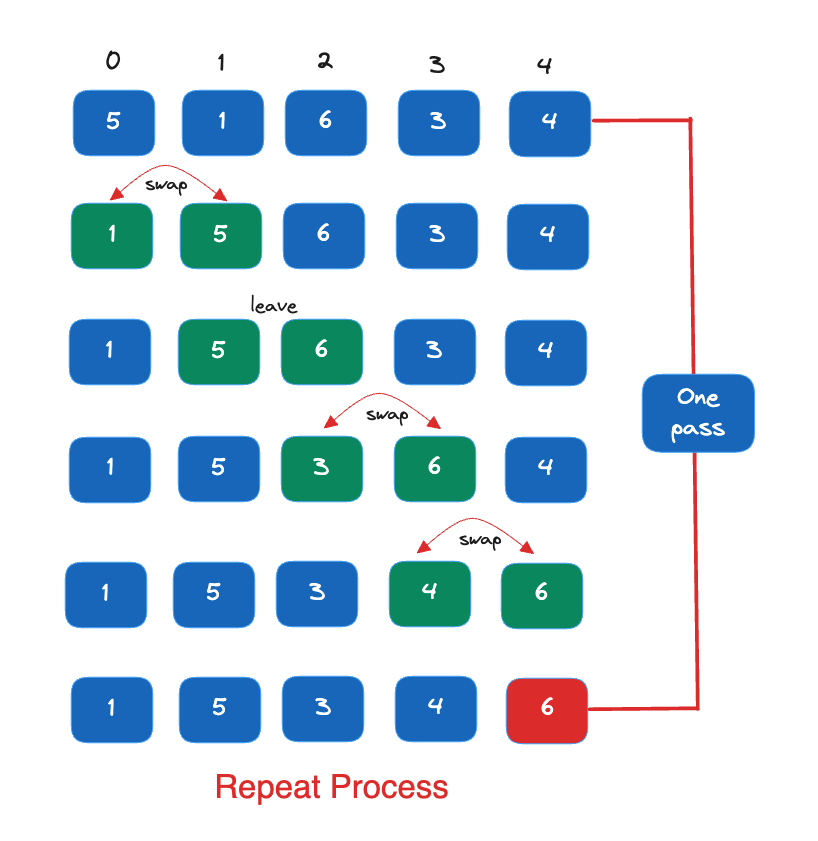Bubble sort
Bubble sorting is one of the simplest sorting algorithms that is not used in practice, but is actively used for training purposes. It works by repeatedly going through the sorted list, comparing each pair of neighboring elements and replacing them if they are in the wrong order. The pass through the list is repeated until no permutations are needed, indicating that the list is sorted.
How it works:
Step 1: The algorithm starts by comparing the first two elements of the array. If the first element is greater than the second, they are swapped. Otherwise, they remain in their positions.
Step 2: This process is then repeated for each pair of neighboring elements throughout the array. After the first iteration, the largest element will “pop up” to the last position.
Step 3: The algorithm then repeats the process for the remaining elements (excluding those already sorted at the end of the array). At each pass, the next largest element is placed in the correct position.
Step 4: The algorithm terminates when a pass through the entire array is made without any swaps, indicating that the array is now sorted.
Key Characteristics:
Basic Algorithm: Bubble sort compares adjacent elements and swaps them if they’re in the wrong order, repeating until sorted.
In-place Sorting: Sorts elements by swapping them in place, no extra storage needed.
Stability: Preserves relative order of equal elements, making it stable.
Adaptive: Can perform better if the input is nearly sorted, but still O(n^2) in the worst case.
Easy to Implement: Straightforward to understand and implement.
Inefficiency: Not suitable for large datasets due to its quadratic time complexity.
Applications:
Educational Purposes: Bubble sort is commonly used to teach sorting algorithms due to its simplicity.
Small Datasets: Suitable for sorting small datasets where simplicity outweighs efficiency.
Embedded Systems: Can be used in environments with limited resources for sorting small arrays.
Testing and Debugging: Useful for quick implementation and verification of sorting functionality.
Ad Hoc Sorting: Provides a quick-and-dirty solution for one-time or temporary sorting needs.
Time complexity:
Bubble sort has a time complexity of O(n^2) in the worst and average cases, where n is the number of elements in the array. This makes it inefficient for large datasets but useful for educational purposes because of its simplicity.

Example:
function bubbleSort(array: number[] | string[]) {
for (let i = 0; i < array.length; i++) {
for (let j = 0; j < array.length - 1 - i; j++) {
if (array[j] > array[j + 1]) {
[array[j], array[j + 1]] = [array[j + 1], array[j]];
}
}
}
return array;
}
console.log(bubbleSort([2, 5, 2, 6, 7, 2, 22, 5, 7, 9, 0, 2, 3]));
public static void bubbleSort(int[] array) {
for(int i = 0; i < array.length - 1; i++) {
for(int j = 0; j < array.length - i - 1; j++) {
if(array[j] > array[j + 1]) {
int temp = array[j];
array[j] = array[j + 1];
array[j + 1] = temp;
}
}
}
}